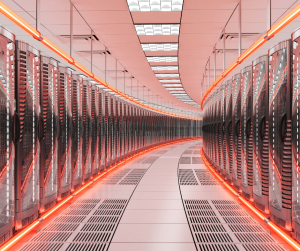Nestled within the heart of modern technology lies a fortress of safeguarded secrets – the enigmatic datacenter. Imagine a digital sanctuary where rivers of data flow ceaselessly, guarded by invisible sentinels and shielded by impenetrable walls of encryption. Welcome to the realm where information reigns supreme and protection is paramount. In this blog post, we will embark on a journey deep into the core of the digital world, unraveling the intricate tapestry of storage and protection methods that define the essence of a datacenter.
As we venture into the inner sanctum of this technological colossus, we will peel back the layers of complexity surrounding the enigmatic Datacenter. Like a master puzzle waiting to be solved, each server rack holds the key to a myriad of data storage techniques and protection protocols. From redundant arrays of independent disks (RAID) to cutting-edge encryption algorithms, every corner of the Datacenter whispers tales of resilience and security. Join us as we demystify the arcane practices that transform a mere facility into the beating heart of the digital universe, where the keyword “Datacenter” holds the power to unlock a world of hidden marvels.
The Foundation: Understanding Data Storage Architecture
At the very core of a datacenter lies the intricate web of data storage architecture. This foundation serves as the backbone, supporting the vast amounts of information that flow through its servers. To comprehend the inner workings of a datacenter, one must first grasp the fundamental principles that govern its storage infrastructure.
Datacenters employ various storage technologies to ensure efficient and reliable data management. One such technology is RAID, which stands for Redundant Array of Independent Disks. RAID combines multiple physical hard drives into a single logical unit, offering increased performance and fault tolerance. By distributing data across multiple drives and utilizing redundancy techniques, RAID protects against drive failures and minimizes downtime.
Additionally, datacenters often utilize Storage Area Networks (SANs) to centralize storage resources and facilitate seamless access to data. SANs consist of high-speed networks that connect servers to shared storage devices. This architecture allows for scalable and flexible storage solutions, enabling efficient resource allocation and simplified management.
Fortifying Walls: Physical Security Measures in Datacenters
Physical security measures form an integral part of any well-designed datacenter. These measures are put in place to safeguard against unauthorized access, theft, and environmental hazards that could compromise the integrity of stored data.
Datacenters implement stringent access control systems to regulate entry into their premises. Biometric authentication methods such as fingerprint or iris scanning are commonly employed alongside traditional security protocols like keycards or PIN codes. These multi-layered security measures ensure that only authorized personnel can gain entry into restricted areas.
In addition to access control systems, surveillance cameras are strategically positioned throughout the facility to monitor activities in real-time. Advanced video analytics software can detect suspicious behavior patterns or unauthorized individuals attempting to breach security protocols.
Guardians of the Data: Role of Cybersecurity in Data Protection
As the digital landscape becomes increasingly complex, the role of cybersecurity in data protection has never been more critical. Datacenters invest heavily in robust cybersecurity measures to defend against cyber threats and ensure the confidentiality, integrity, and availability of stored data.
Firewalls are deployed at various network entry points to filter incoming and outgoing traffic, preventing unauthorized access and malicious activities. Intrusion Detection Systems (IDS) and Intrusion Prevention Systems (IPS) continuously monitor network traffic for suspicious behavior or potential security breaches.
Datacenters also employ advanced threat detection mechanisms such as Security Information and Event Management (SIEM) systems. These systems collect and analyze security event logs from various sources, enabling proactive identification of potential threats and vulnerabilities.
Shielding Data: Encryption Techniques Employed in Datacenters
Encryption serves as a powerful shield against unauthorized access to sensitive data. Datacenters utilize encryption techniques to protect information both at rest and during transmission.
At rest encryption involves encrypting data when it is stored on physical media such as hard drives or solid-state drives. This ensures that even if the storage media is compromised, the data remains unintelligible without the decryption key.
During transmission, data is encrypted using secure protocols such as Transport Layer Security (TLS) or Secure Sockets Layer (SSL). These protocols establish an encrypted connection between the client device and the server, preventing eavesdropping or tampering with sensitive information.
Conclusion: Safeguarding the Future of Information Storage and Protection
In conclusion, datacenters are not merely physical facilities but fortresses that house our most valuable digital assets. Understanding their storage architecture, physical security measures, cybersecurity protocols, and encryption techniques provides insight into how these sanctuaries protect our information from prying eyes and malicious intent.
As technology continues to evolve, datacenters will remain at the forefront of innovation in data storage and protection. The keyword “Datacenter” will continue to symbolize the stronghold where our digital secrets are safeguarded, ensuring a secure and resilient future for information storage.


